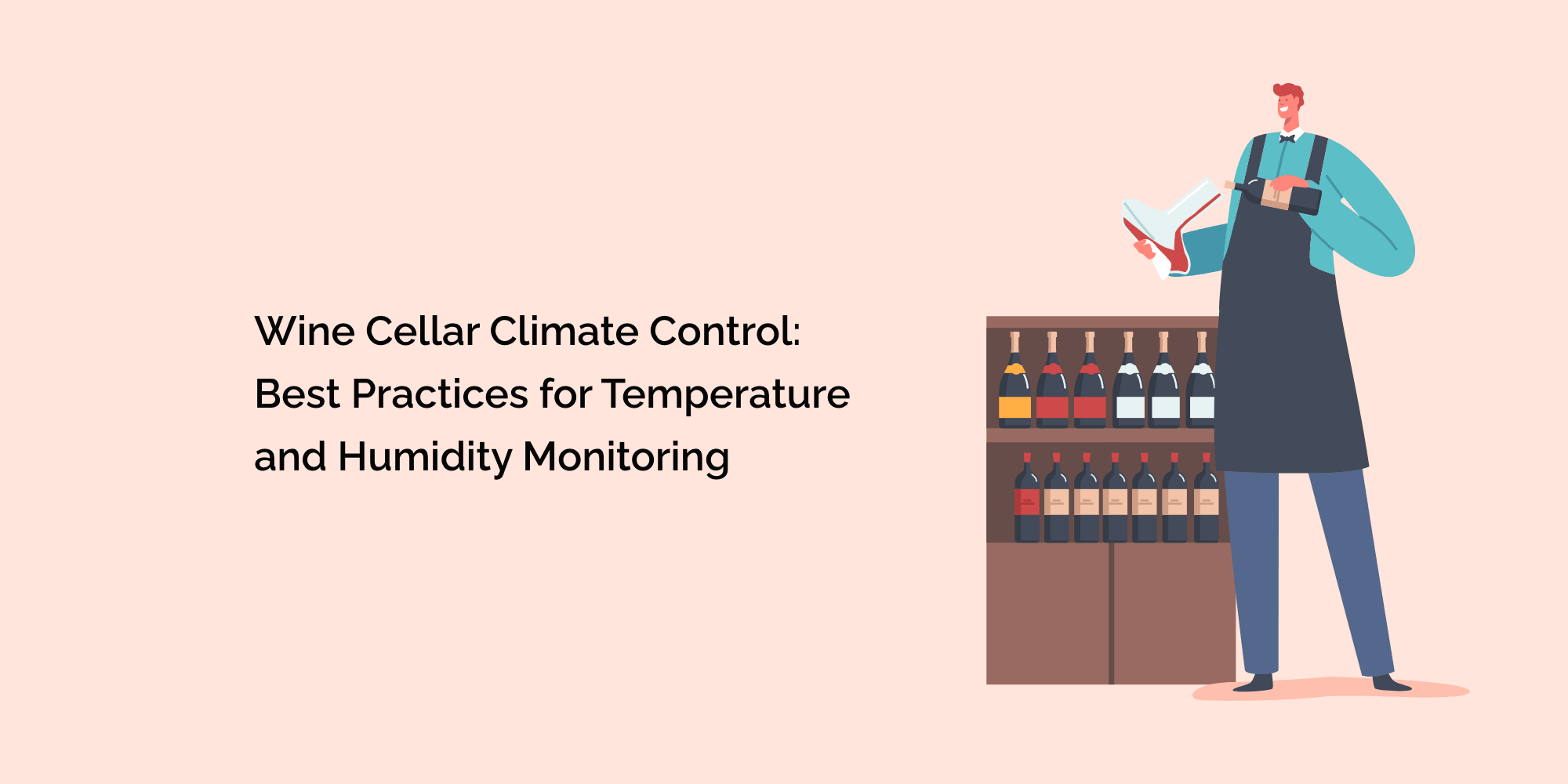Creating the perfect environment in a wine cellar is essential for preserving and aging fine wines. Temperature and humidity play crucial roles in wine storage, influencing the aging process and maintaining the quality of the wine. Proper climate control is the key to ensuring that your cherished bottles mature gracefully and deliver an exceptional tasting experience. In this comprehensive blog, we will delve into the best practices for temperature and humidity monitoring in wine cellars, understanding the impact of these factors on wine aging, and how to optimize climate control to safeguard your valuable wine collection.
The Role of Temperature in Wine Cellars:
Temperature is one of the most critical factors in wine storage due to several reasons:
-
Wine Aging and Development: Proper temperatures allow wines to age gracefully, allowing them to develop complex flavors and aromas over time.
-
Consistency in Aging: Maintaining a stable temperature throughout the wine cellar ensures that all bottles age uniformly, avoiding variations in the aging process.
-
Preventing Spoilage: High temperatures can lead to wine spoilage, causing off-flavors and aromas that diminish the wine's quality.
-
Avoiding Oxidation: High temperatures can accelerate oxidation, negatively impacting the freshness and aging potential of wines.
- Preservation of Investment: For wine collectors, proper temperature control safeguards the investment value of their collection, preserving the market value of rare and valuable bottles.
The Importance of Humidity in Wine Cellars:
Humidity is equally crucial for wine cellars for the following reasons:
-
Cork Preservation: Adequate humidity prevents corks from drying out and shrinking, maintaining an airtight seal and preventing unwanted oxygen exposure.
-
Minimizing Wine Evaporation: Proper humidity levels minimize the evaporation of wine from bottles, preventing loss of volume and impacting wine concentration.
-
Mold Prevention: Excessive humidity can lead to mold growth, which can taint wine labels and cause damage to the cellar's structure.
-
Preventing Label Damage: Proper humidity levels preserve wine labels, especially on older or rare bottles, maintaining their aesthetic appeal.
- Protecting Cork Integrity: High humidity ensures that corks remain in good condition, avoiding crumbling or breaking during bottle opening.
The Ideal Wine Cellar Climate:
The ideal wine cellar climate strikes a balance between temperature and humidity:
-
Optimal Temperature Range: The ideal temperature range for wine aging is between 55°F to 59°F (12.8°C to 15°C) for red wines and 49°F to 55°F (9.4°C to 12.8°C) for white wines. Proper temperature conditions allow wines to develop complex flavors and mature gracefully.
-
Ideal Humidity Levels: Aim for humidity levels between 60% to 70% to preserve cork integrity and prevent wine evaporation.
-
Stable Climate: Avoid temperature fluctuations, as they can negatively impact wine aging and lead to wine faults.
-
Consistent Monitoring: Regularly monitor temperature and humidity levels to ensure the climate remains within the optimal range.
- Ventilation and Air Circulation: Ensure adequate ventilation and air circulation to prevent mold growth and maintain consistent conditions.
Temperature and Humidity Monitoring Systems:
Investing in a reliable temperature and humidity monitoring system provides valuable data and peace of mind:
-
Real-Time Monitoring: These systems provide real-time data on temperature and humidity, enabling immediate action in case of fluctuations.
-
Alerting Mechanisms: Monitoring systems can send alerts and notifications if the temperature or humidity exceeds predefined thresholds, preventing potential wine spoilage.
-
Historical Data Analysis: Analyzing historical data helps identify trends and patterns, allowing collectors to fine-tune storage conditions for optimal wine preservation.
-
Remote Monitoring: Remote monitoring capabilities allow collectors to access data from anywhere, ensuring constant vigilance over the wine cellar's conditions.
- Integration with Climate Control Systems: Advanced monitoring systems can integrate with climate control systems to maintain precise temperature and humidity levels automatically.
Best Practices for Temperature and Humidity Monitoring:
To optimize climate control in your wine cellar, consider the following best practices:
-
Consistent Monitoring: Regularly monitor and log temperature and humidity levels to identify and address any fluctuations promptly.
-
Optimal Temperature Range: Ensure the wine cellar maintains a consistent temperature within the ideal range for wine aging.
-
Ideal Humidity Levels: Aim for humidity levels between 60% to 70% to preserve cork integrity and prevent wine evaporation.
-
Avoid Temperature Fluctuations: Minimize temperature fluctuations to ensure consistent wine aging and prevent wine faults.
- Proper Wine Cellar Insulation: Insulate the wine cellar properly to maintain stable temperature and humidity levels, reducing the need for excessive cooling or humidification.
Wine Cellar Organization:
Organizing your wine cellar strategically can aid in climate control:
-
Temperature Zones: If your wine cellar has multiple temperature zones, organize wines based on their ideal aging temperatures.
-
Consistent Bottling Layout: Organize wine bottles consistently to allow for even air circulation and uniform aging.
-
Wine Racking System: Invest in a high-quality wine racking system that allows for proper storage and accessibility.
- Label Visibility: Ensure wine labels are visible to make bottle selection easier without disturbing the wine aging environment.
Conclusion:
Temperature and humidity monitoring are vital for creating the perfect climate in your wine cellar. With careful consideration, precise control, and the right monitoring systems, wine enthusiasts and collectors can create an environment that nurtures their cherished bottles, ensuring they age gracefully and deliver an exceptional tasting experience.
By adhering to best practices and understanding the impact of temperature and humidity on wine aging, you can confidently build a wine cellar that safeguards your valuable collection for generations to come.








